An illustrative example
In a LCAO calculation of H2 carried out with a minimal basis set, the density results:

(1)
where
 are the elements of the density matrix,
are the elements of the density matrix,
 ,
,
 stands for the position of the nuclei
stands for the position of the nuclei
 (
(
 or
or
 ), and
), and
 is either a
is either a
 STO or the corresponding combination of Gaussian primitives.
The first and third terms in (1) contain the spherical charge distributions,
STO or the corresponding combination of Gaussian primitives.
The first and third terms in (1) contain the spherical charge distributions,
 centered at the nuclei
centered at the nuclei
 . The second term has the two-center charge distribution,
. The second term has the two-center charge distribution,
 extending along the internuclear axis.
extending along the internuclear axis. Depicting the values of these distributions along the internuclear axis one has:
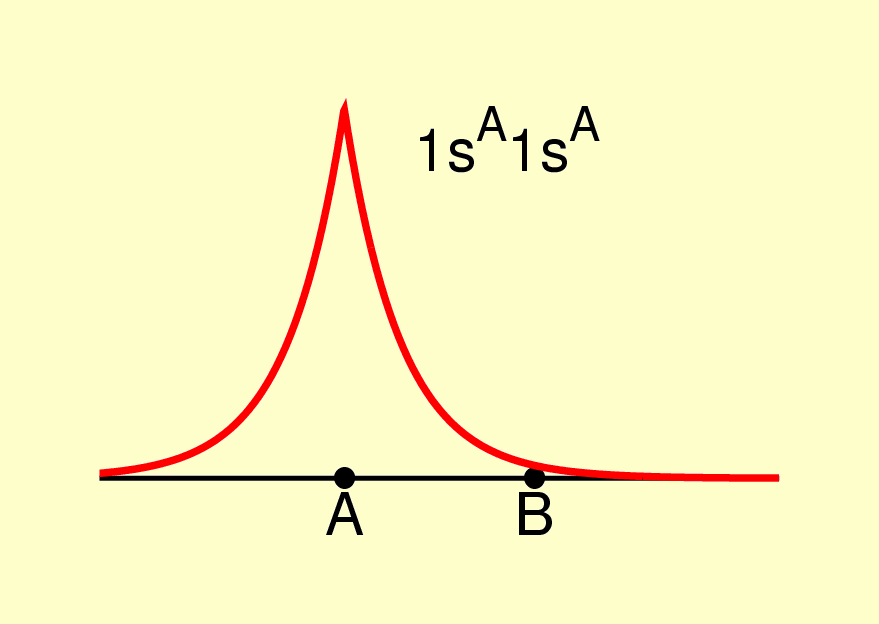
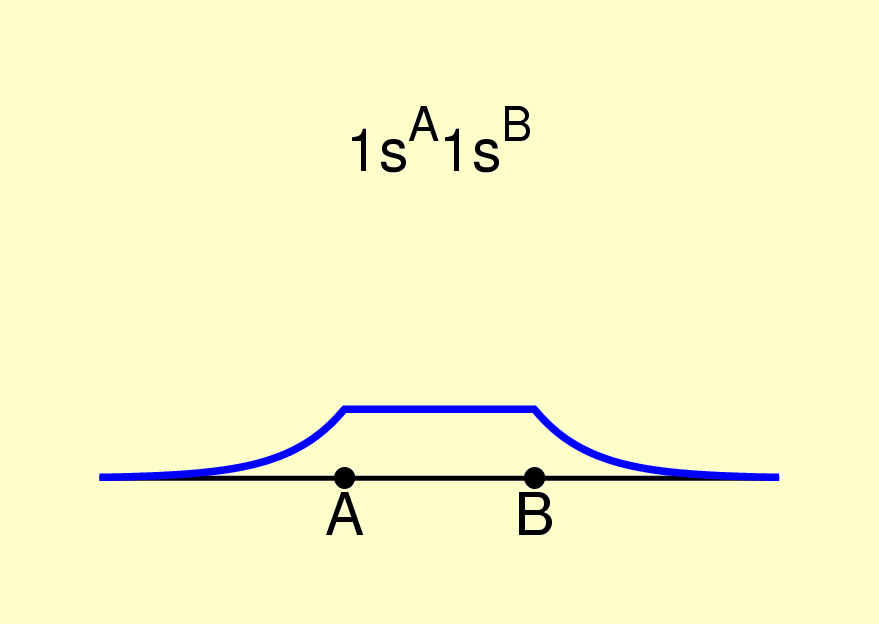
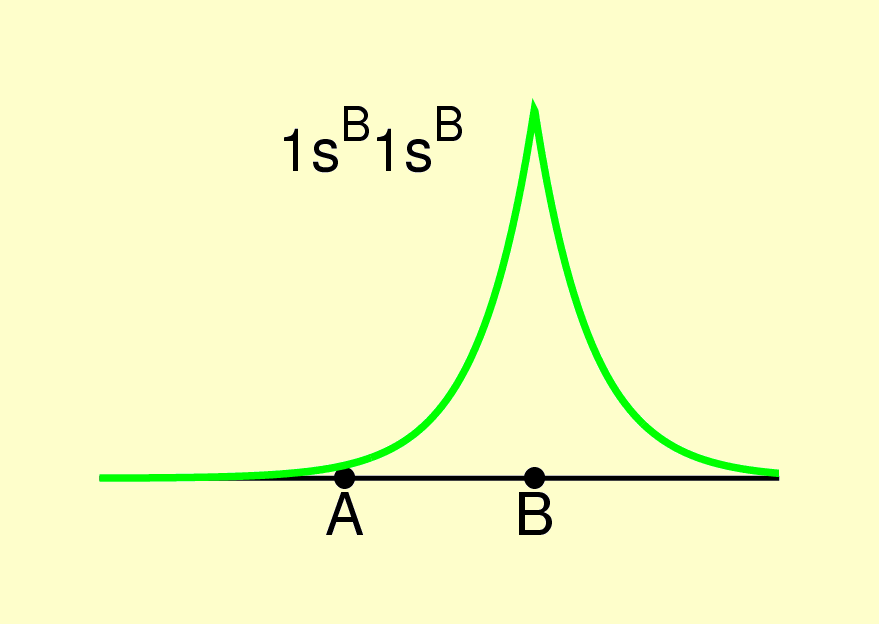
The one-center contributions to the density are:

(2)
The two-center contributions are obtained after partitioning the two-center distribution into two minimally deformed fagments:

(3)
This partitioning is illustrated in the next figure, where the full distribution,
 and the
and the
 and
and
 fragments have been plotted along the internuclear axis:
fragments have been plotted along the internuclear axis:
The two-center contributions are:

(4)
The
 elements of the density matrix can be obtained with different methods. Taking
elements of the density matrix can be obtained with different methods. Taking
 and
and
 , and employing the VB, RHF and CI methods for
, and employing the VB, RHF and CI methods for
 one obtains the following pictures of
one obtains the following pictures of
 ,
,
 , and
, and
 along the internuclear axis:
along the internuclear axis:
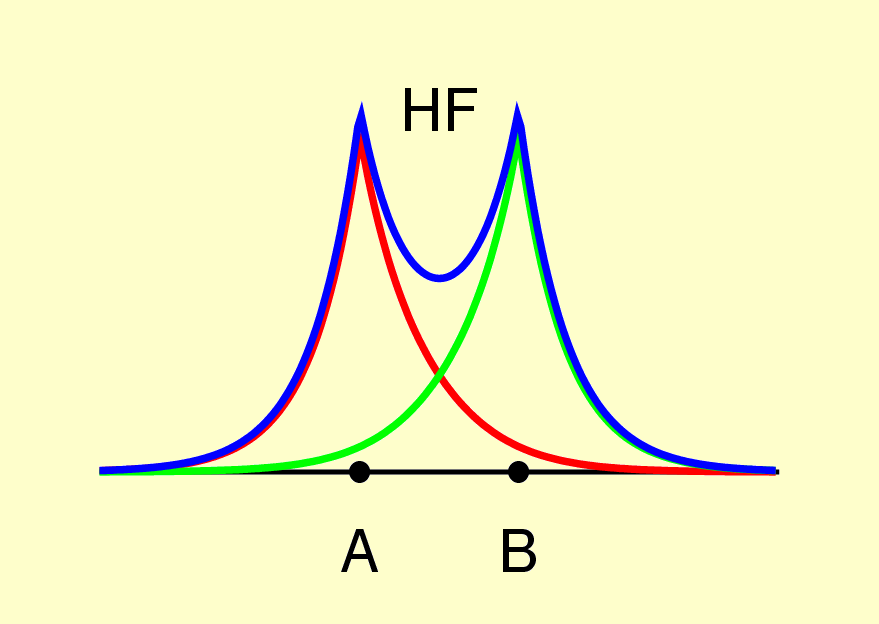
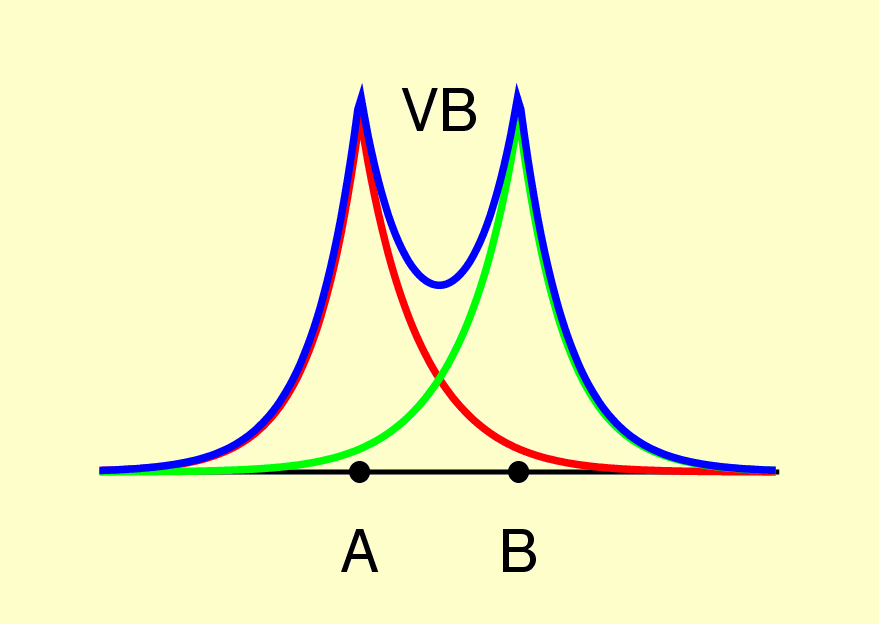
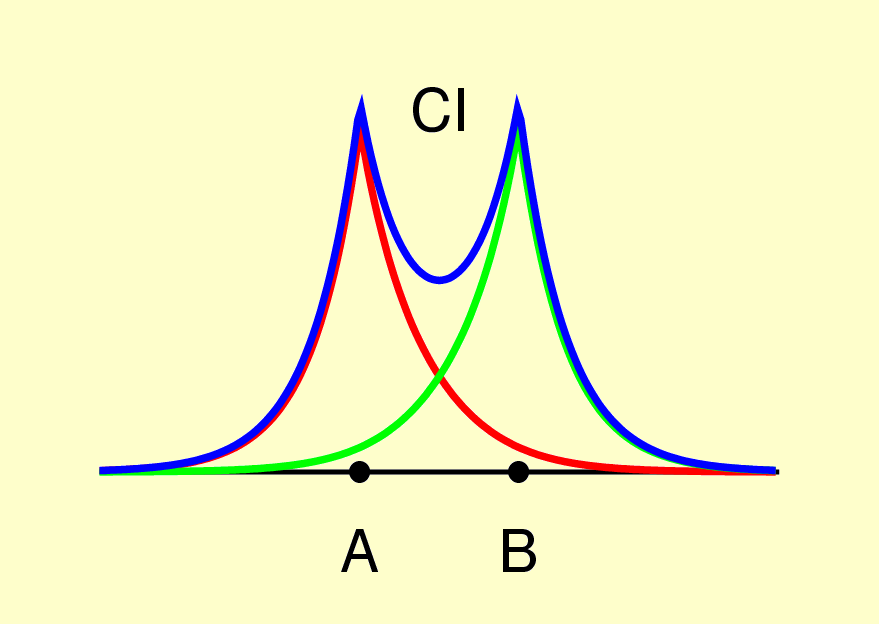
The last step in the method is the expansion of
 in spherical harmonics centered at
in spherical harmonics centered at
 times radial factors:
times radial factors: 
(5)
This expansion is illustrated in the following figures by drawing the values of the first terms along the internuclear axis. The terms with
 have been multiplied by 10 for clarity.
have been multiplied by 10 for clarity.